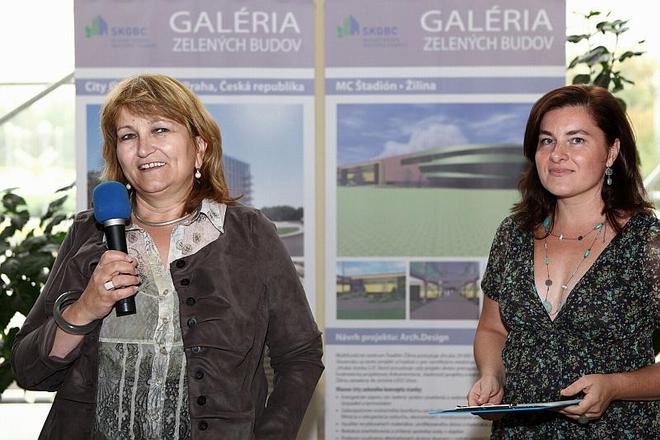GLOBAL warming caused by greenhouse gases released by the burning of fossil fuels for power generation has become an issue in architecture. Architects no longer consider only how buildings look and how they meet their functional requirements, but also take into account their environmental impact. Sustainable architecture seeks to minimise the negative impacts of buildings on the environment and to draw attention to the importance of healthier and more sustainable communities. To pursue these aims, Slovakia participated for the first time in the annual World Green Building Week in mid September.
“Slovakia is holding this event for the first time and we hope that this will become a tradition and an opportunity to disseminate information and strengthen knowledge about sustainable building and green houses in Slovakia,” said Vladimíra Bukerová, the head of the Slovak Green Building Council (SKGBC), at the opening event on September 19.
World Green Building Week in Slovakia was supported by mayors Milan Ftáčnik and Richard Raši from the country’s two biggest cities, Bratislava and Košice respectively, by the chief architect of Bratislava City Council, the Faculty of Architecture at the Slovak University of Technology in Bratislava, the Bratislava public transport company and by individual members of SKGBC.
Ingrid Konrádová, the chief architect of Bratislava’s city council, called for more green architecture in real life.
“20 years have elapsed since the large social and economic change in this country and we should realise the impact and importance of ecology not only theoretically, but also implement it in practice,” said Konrádová.
Konrádová added that she does not see a problem in meeting the requirement to make all new buildings energy-passive by 2020, but suggested that retrofitting buildings built before 1989 so that they are more environmentally-friendly and leave a smaller ecological footprint will be more of a challenge. Julián Keppl from the Institute of Ecological and Experimental Architecture said that currently more than 50 percent of the world’s population lives in cities and if this trend continues more than two-thirds will be urban dwellers by 2050.
“For now cities are taking up ‘only’ 2 percent of the earth’s surface, but they consume as much as 70-80 percent of the total generated electricity for their operation,” said Keppl.
Because cities use electricity generated almost exclusively from fossil fuels they contribute as much as 80 percent to the total amount of greenhouse gases emitted into the atmosphere , Keppl said, adding that the building industry is responsible for almost half of this. He said cities bear a large share of the blame for climate change, which has become evident faster than originally expected.
“And this is probably the clearest answer to the question of whether and why to construct green buildings,” Keppl said.
World Green Building Week 2011 ran from September 19 until September 25. Its theme was ‘Green Buildings in the New Green Economy'. The large number of organisations that joined the initiative under the auspices of the World Green Building Council shows that support for the idea of sustainable building is becoming stronger each year and that the thinking of people has been changing radically around the world, SKGBC wrote in its leaflet. The event in Slovakia offered an exhibition of green housing projects, open houses at firms active in sustainable building and architecture; and various lectures and discussions.



 Ingrid Konrádová (left) and Vladimíra Bukerová (source: SKGBC)
Ingrid Konrádová (left) and Vladimíra Bukerová (source: SKGBC)